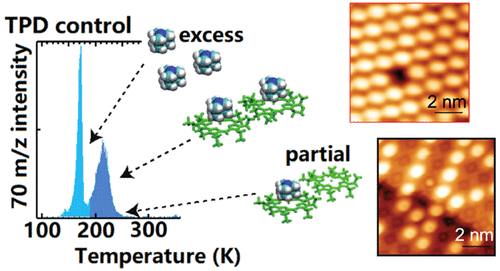当前位置:
X-MOL 学术
›
ACS Appl. Nano Mater.
›
论文详情
Our official English website, www.x-mol.net, welcomes your feedback! (Note: you will need to create a separate account there.)
Layer-by-Layer Epitaxy of Porphyrin−Ligand Fe(II)-Fe(III) Nanoarchitectures for Advanced Metal–Organic Framework Growth
ACS Applied Nano Materials ( IF 5.9 ) Pub Date : 2020-11-25 , DOI: 10.1021/acsanm.0c02237 Zishu Wang 1, 2 , Kai Qian 1, 2 , Murat Anil Öner 3 , Peter S. Deimel 3 , Yan Wang 1, 4 , Shuai Zhang 1, 2 , Xiaoxi Zhang 1, 2 , Vishal Gupta 1 , Juan Li 1, 5 , Hong-Jun Gao 1, 2, 6 , David A. Duncan 3, 7 , Johannes V. Barth 3 , Xiao Lin 1, 2, 6 , Francesco Allegretti 3 , Shixuan Du 1, 2, 6 , Carlos-Andres Palma 1, 3, 8
ACS Applied Nano Materials ( IF 5.9 ) Pub Date : 2020-11-25 , DOI: 10.1021/acsanm.0c02237 Zishu Wang 1, 2 , Kai Qian 1, 2 , Murat Anil Öner 3 , Peter S. Deimel 3 , Yan Wang 1, 4 , Shuai Zhang 1, 2 , Xiaoxi Zhang 1, 2 , Vishal Gupta 1 , Juan Li 1, 5 , Hong-Jun Gao 1, 2, 6 , David A. Duncan 3, 7 , Johannes V. Barth 3 , Xiao Lin 1, 2, 6 , Francesco Allegretti 3 , Shixuan Du 1, 2, 6 , Carlos-Andres Palma 1, 3, 8
Affiliation

|
Precisely layered molecular heterostructures are promising but still largely unexplored materials, with the potential to complement and enhance the scope of two-dimensional heterostructures. The controlled epitaxial growth of vertically stacked molecular layers connected through tailored linkers, can lead to significant development in the field. Here, we demonstrate that sequential assembly of prototypical iron porphyrins and axial ligands can be steered via temperature-programmed desorption, and monitored by mass spectrometry and by high-resolution atomic force microscopy under ultrahigh vacuum conditions. Complementary photoelectron spectroscopy analysis delivers chemical insight into the formation of layer-by-layer nanoarchitectures. Our temperature-directed methodology outlines a promising strategy for the in vacuo fabrication of precisely stacked, multicomponent (metal–organic) molecular heterostructures.
中文翻译:

卟啉-配体Fe(II)-Fe(III)纳米体系的逐层外延,用于先进的金属-有机骨架生长
精确分层的分子异质结构是很有希望的,但仍是很大程度上尚未探索的材料,具有补充和扩大二维异质结构范围的潜力。通过定制的接头连接的垂直堆叠分子层的受控外延生长可以导致该领域的重大发展。在这里,我们证明可以通过程序升温脱附来控制原型卟啉和轴向配体的顺序组装,并通过质谱和高分辨率原子力显微镜在超高真空条件下进行监测。互补光电子能谱分析提供了对形成逐层纳米体系结构的化学认识。
更新日期:2020-12-24
中文翻译:

卟啉-配体Fe(II)-Fe(III)纳米体系的逐层外延,用于先进的金属-有机骨架生长
精确分层的分子异质结构是很有希望的,但仍是很大程度上尚未探索的材料,具有补充和扩大二维异质结构范围的潜力。通过定制的接头连接的垂直堆叠分子层的受控外延生长可以导致该领域的重大发展。在这里,我们证明可以通过程序升温脱附来控制原型卟啉和轴向配体的顺序组装,并通过质谱和高分辨率原子力显微镜在超高真空条件下进行监测。互补光电子能谱分析提供了对形成逐层纳米体系结构的化学认识。



























 京公网安备 11010802027423号
京公网安备 11010802027423号